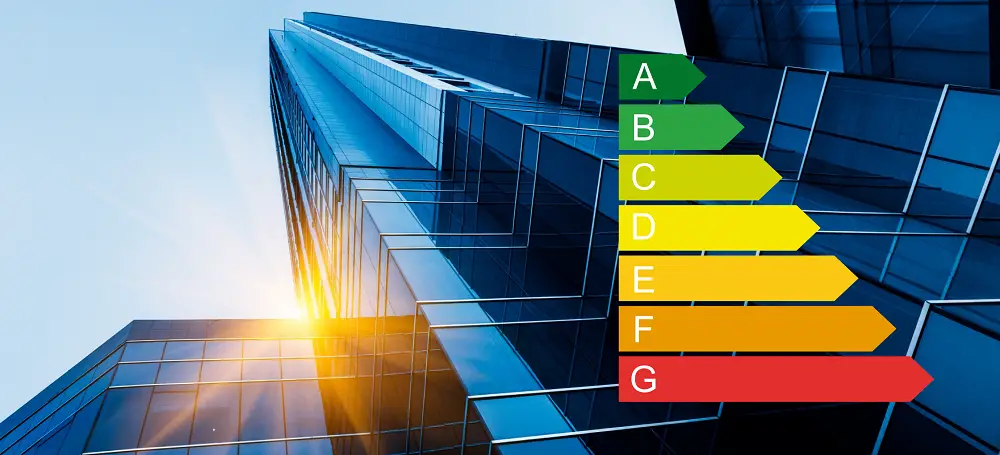By next December, some non-residential buildings will be required by law to display an Energy Performance Certificate (EPC), which demonstrates the efficiency or inefficiency of a building. This is done by measuring the building’s energy use intensity and giving it a colour-coded score from A-G, like the energy rating you would find on appliances.
In the same way that drivers check the fuel consumption of a car before renting or buying it, knowing the energy performance of a building empowers potential buyers or tenants to make a more informed decision.
It is hoped that this will be a great boost for energy efficiency in South Africa, since the first step toward lowering energy consumption is knowing energy consumption. The new regulation requires that energy data is collected over the period of a year, to get an adequate measure of the building’s energy use. Thus, building owners will see how their buildings compare against the SANS 10400-XA benchmark energy usage intensity value.
Once information on a building’s energy performance is publicly displayed, it will be much harder to justify operating an inefficient building. Buyers and tenants do not desire to move into a building that will be more expensive to run and will be a drain on the Planet’s resources.
Also Read: SACAP Stakeholder Convention to take place on 26th August 2021
EPCs in South Africa
To obtain an EPC, a building owner will need to gather some of the building information – the electricity consumption data for a year, the net floor area, information on the areas excluded, vacancy rates – and contract a South African National Accreditation System (SANAS) accredited inspection body (IB) to audit the information. The IB submits the energy performance value to the South African National Energy Development Institute (SANEDI), which inputs it into the National Building Energy Performance Register. A unique number for the EPC is generated and sent to the SANAS accredited IB, who then issues the EPC to the client for display.
The National Building Energy Performance Register will assist with future benchmarking of building energy consumption and track progress toward achievement of the targets set out in future EPC regulations.
Before joining the Green Building Council South Africa (GBCSA), CEO Lisa Reynolds played an important role in the development of SANS 1544, the South African National Standard, which governs EPCs. “The old adage “if you don’t measure it, you can’t manage it” is the basis for the EPC Regulations. The energy usage of the South African existing building stock is unknown. How do we improve on an unknown? By measuring it – and ultimately improving on it,” says Reynolds.
The Stellenbosch University Admin B building is the first in South Africa to achieve an EPC. The building received an A-rating for electrical consumption of 48 kWh per square metre per year. The University has been collecting data for several years and the data verification was completed by Bluedust Engineering Solutions. This information was handed to Mess Energy Management and Validation Service, which is accredited by SANEDI to issue EPCs.
The challenge is now on to see which building in South Africa will be the next to get its Energy Performance Certificate.
The GBCSA is providing training workshops on EPC’s in two parts/sessions. The first one is for building owners, facilities managers and consultants interested in understanding more about the EPC process and the second session must also be attended for those wishing to become SANAS accredited inspection bodies. Click here for more information.
Towards Net Zero
Understanding the energy performance of a building is a vital first step on the journey to a net zero carbon building, which is the ultimate goal for the GBCSA. From knowing the energy usage intensity of a building; leading to the energy efficiency retrofitting of that building; and ultimately the retrofitting into a net zero carbon building.
The GBCSA strongly advocates for net zero carbon buildings. These are very highly energy efficient buildings, with the remainder of the power required for the operation of the building provided by renewable energy sources.

